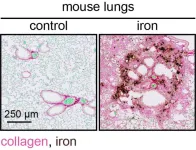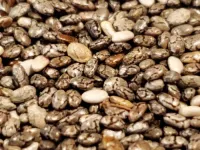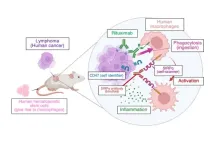(Press-News.org) DAVIS, CA, December 14, 2023 – A recent study published online in the journal, Nutrients[1], suggests daily tree nut consumption reduces the risk of metabolic syndrome (MetSx) by improving waist circumference, lipid biomarkers, and/or insulin levels, without requiring calorie restriction, in young adults.
In a randomized, parallel arm, dietary intervention study design, researchers at Vanderbilt University Medical Center enrolled 84 men and women, ages 22-36, most of whom were either overweight or obese (BMI 24.5 to 34.9 kg/m2) and had at least one MetSx risk factor at baseline (abdominal obesity, elevated triglycerides, low HDL cholesterol, high blood pressure, or elevated levels of blood glucose). Participants consumed either one ounce of mixed unsalted tree nuts or one ounce of a carbohydrate-rich snack twice daily. Both snacks provided the same number of calories, protein, fiber, and sodium and were part of a 7-day eucaloric weight maintenance menu that repeated throughout the study duration of 16 weeks.
The results showed females who consumed tree nuts snacks had a reduced waist circumference (mean difference: -2.20 ± 0.73 cm, P = 0.004) and a trend toward reduced visceral (intra-abdominal) fat (-5.27 ± 13.05 cm2, P = 0.06) compared to those consuming carbohydrate snacks. Males who consumed tree nuts snacks had decreased blood insulin levels (-1.14 ± 1.41 mIU/L, P = 0.05). Both males and females consuming tree nuts snacks saw an effect on triglycerides and TG/HDL ratios (P = 0.04 for both) with TG/HDL ratios reduced ~11% compared to those consuming carbohydrate snacks.
“When we assessed the effect of tree nut snacks on individual MetSx scores (calculated by assigning 1 point for each metabolic syndrome risk factor),” said Principal Investigator,
Tree Nuts and Metabolic Syndrome in Millennials
Page 2
Heidi J. Silver, R.D., M.S., Ph.D., Research Professor of Medicine at Vanderbilt University Medical Center, “we observed a 67% reduction in MetSx score in females and a 42% reduction in MetSx score in males.”
Overall prevalence of MetSx, which increases risk for diabetes and cardiovascular diseases, has increased to 21.3% among healthy American young adults, aged 20-39 years.[2] “We know that snacking contributes almost 25% of total daily calories in young adults in the U.S.,” explained Dr. Silver. “Substituting typical high carbohydrate snacks with tree nuts (almonds, Brazil nuts, cashews, hazelnuts, macadamias, pecans, pine nuts, pistachios and walnuts) would likely have a positive impact in reducing the risk of metabolic syndrome and its consequences in this age group.”
Previous research has shown the beneficial effects of tree nuts in helping to reduce the risk of several chronic diseases including overweight/obesity, diabetes, and heart disease. “With MetSx and its various risk factors on the rise worldwide, this is yet another reason to include tree nuts in your diet,” said Maureen Ternus, M.S., R.D.N, Executive Director of the International Tree Nut Council Nutrition Research & Education Foundation (INC NREF). “In 2003, the FDA (in its qualified health claim for nuts and heart disease) recommended that people eat 1.5 ounces of nuts per day—well above current consumption levels. We need to encourage people—especially those Millennials at risk for MetSx—to get their handful of nuts every day.”
# # #
The International Tree Nut Council Nutrition Research & Education Foundation (INC NREF) is a
non-profit, non-governmental organization dedicated to supporting nutrition research and education for consumers and health professionals throughout the world. Members include those associations and organizations that represent the nine tree nuts (almonds, Brazil nuts, cashews, hazelnuts, macadamias, pecans, pine nuts, pistachios and walnuts). For more information, please visit our website at www.nuthealth.org.
_____
[1] Sumislawski K., Widmer A., Suro R.R., Robles M.E., Lillegard K., Olson D., Koethe J.R., Silver H.J., 2023. Consumption of tree nuts as snacks reduces metabolic syndrome risk in young adults: A randomized trial. Nutrients. 15, 5051. https://doi.org/10.3390/nu15245051
[1] Hirode, G., R.J. Wong, 2020. Trends in the prevalence of metabolic syndrome in the United States, 2011–2016. JAMA 323:2526–2528.
END
Those who binge drink and have a certain genetic makeup are six times more likely to develop alcohol-related cirrhosis, according to new research from UCL, the Royal Free Hospital, the University of Oxford and the University of Cambridge.
The study, published in Nature Communications, is the first to assess how an individual’s pattern of drinking, their genetic profile (via a polygenic risk score) and whether or not they have type-2 diabetes affects their risk of developing alcohol-related cirrhosis (ARC).
The observation that pattern of drinking is more important than volume, coupled with the increased risk when genetic makeup and type-2 diabetes are also present, ...
PITTSBURGH, Dec. 14, 2023 – Spinal cord stimulation can elicit sensation in the missing foot and alleviate phantom limb pain in people with lower limb amputations, University of Pittsburgh School of Medicine rehabilitation scientists report today.
Pressure sensors on the insole of a prosthetic foot triggered electrical pulses that were then delivered to a participants’ spinal cord. Researchers found that this sensory feedback also improved balance and gait stability. The proof-of-concept study was done in collaboration with Carnegie Mellon ...
Cardiovascular diseases are the leading cause of death in the world according to the Global Burden of Disease study, with 18.6 million annual deaths in 2019, of which around 7.9 are attributable to diet. This means that diet plays a major role in the development and progression of these diseases. The modern lifestyle of Western societies has led to specific eating habits such as eating dinner late or skipping breakfast. In addition to light, the daily cycle of food intake (meals, snacks, etc.) alternating with periods of fasting synchronizes the peripheral clocks, or circadian rhythms, of the body’s various organs, thus ...
All dog owners think that their pup is special. Science now has documented that some rare dogs are…even more special! They have a talent for learning hundreds of names of dog toys. Due to the extreme rarity of this phenomenon, until recently, very little was known about these dogs, as most of the studies that documented this ability included only a small sample of one or two dogs. In a new study published in the Journal Scientific Reports, researchers from the Family Dog Project (ELTE Eötvös Loránd University, Budapest) shed new light on the characteristics of these exceptional dogs.
In ...
Researchers at IRB Barcelona reveal the pivotal role of iron accumulation in the development of fibrotic diseases and propose that iron detection via MRI can serve to diagnose fibrosis.
Fibrotic diseases account for 45% of all mortality in developed countries.
Published in Nature Metabolism, the study points to new therapeutic opportunities that target iron.
Barcelona, 14 December 2023 – Fibrosis is associated with various chronic and life-threatening conditions, including pulmonary fibrosis, liver cirrhosis, kidney disease, and cardiovascular diseases, ...
If you thought blurry eyes were to blame for the “beer goggles” phenomenon, think again.
Scientists from the University of Portsmouth have tested the popular theory that people are more likely to find someone attractive while drunk, because their faces appear more symmetrical.
The term “beer goggles” has been used for decades to describe when a person finds themselves sexually attracted to someone while intoxicated, but not sober.
One possible explanation for the effect is that alcohol impairs the drinker’s ability to detect facial asymmetry, ...
CORVALLIS, Ore. – Oregon State University scientists have sequenced the chia genome and in doing so provided a blueprint for future research that capitalizes on the nutritional and human health benefits of the plant.
In the just-published paper, the researchers identified chia genes associated with improving nutrition and sought after properties for pharmaceuticals that could be used to treat everything from cancer to high blood pressure. The seeds of the chia plant have received widespread attention in recent years because of the nutritional punch they pack.
Others have sequenced the chia genome, but this paper provides a more detailed look at the molecular ...
A new paper in Genome Biology and Evolution, published by Oxford University Press, finds that genetic material from Neanderthal ancestors may have contributed to the propensity of some people today to be “early risers,” the sort of people who are more comfortable getting up and going to bed earlier.
All anatomically modern humans trace their origin to Africa around 300 thousand years ago, where environmental factors shaped many of their biological features. Approximately seventy-thousand years ago, the ancestors ...
Mice with human immune cells are a new way of testing anti-cancer drugs targeting the immune system in pre-clinical studies. Using their new model, the Kobe University research team successfully tested a new therapeutic approach that blindfolds immune cells to the body’s self-recognition system and so makes them attack tumor cells.
Cancer cells display structures on their surface that identify them as part of the self and thus prevent them from being ingested by macrophages, a type of immune cell. Cancer immunotherapy aims at disrupting these recognition systems. Previous studies showed that a substance that blinds macrophages to one of ...
Batteries that exploit quantum phenomena to gain, distribute and store power promise to surpass the abilities and usefulness of conventional chemical batteries in certain low-power applications. For the first time, researchers including those from the University of Tokyo take advantage of an unintuitive quantum process that disregards the conventional notion of causality to improve the performance of so-called quantum batteries, bringing this future technology a little closer to reality.
When you hear the word “quantum,” the physics governing the subatomic world, developments in ...





